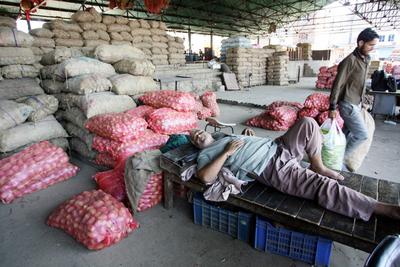There has been much concern about the rupee, which has fallen more than 20 per cent against the US dollar in a few months. With due respect to Oscar Wilde, however, this is not only a metallic problem.
For starters a falling rupee raises the prices of all imports — not just India’s major imports oil and gold. A falling rupee also raises the domestic cost of servicing foreign public and private debt. Whereas public debt as a proportion of GDP is relatively small in India, private debt, in the absence of a well-developed domestic corporate debt market, is quite large. Hence, a medium-term consequence of the fall in the rupee could be a sharp rise in the debt burden of corporations.
All things being equal this will induce corporations to issue more shares, depressing their share prices. The list of ill effects of a falling rupee goes on and on.
To be sure, the spectacular nominal depreciation of the rupee is not matched by a commensurate real depreciation. Change in the real exchange rate is defined as the change in the nominal exchange rate plus foreign inflation minus domestic inflation. Because India has a very high inflation rate, real depreciation has been relatively modest.
Even so, it seems the rebalancing of the real exchange rate was completed when the rupee hit 65 to the US dollar. So why did the nominal value of the rupee deteriorate further beyond that before recovering? When there is a financial shock to the system, such as the passage of India’s very expensive Food Security Bill, the exchange rate takes time to adjust, essentially because domestic price levels are slower to react relative to the nominal exchange rate. This means that in the short run the nominal exchange rate overshoots its equilibrium value before rising domestic prices pull it back. This is what is happening to the rupee.
It is primarily asset markets that determine the price of the rupee. So if the rupee is to be rescued, demand for it as an asset must be increased relative to other currencies, both domestically and abroad. India needs to show the world that inflation is under control and growth is improving — this would make holding rupee-denominated assets an attractive proposition.
In the medium run inflation can be brought under control if the government addresses supply bottlenecks. Success in this policy will also improve growth prospects. Since the drought and general election of 2009, inflation in India has largely been driven by supply. Restraint on the demand side can have only a limited effect, as low inflation in the manufacturing sector demonstrates.
Consumer price inflation is high because schemes such as the National Rural Employment Guarantee Program have led to wage pressures in the rural sector. Under these conditions raising interest rates will do little to moderate inflation. High interest rates will, however, hurt manufacturing sector growth. To improve its growth prospects India needs to restart stalled investment projects and deepen financial assets (particularly the domestic corporate bond market) to increase domestic investment. It also needs to ask itself why there is so much outward FDI from India.
In addition to these policy changes, we think there are three solutions to the problem of the falling rupee.
First, the government should release its large stocks of perishable food and grain onto the retail market to dampen inflation and inflationary expectations.
Second, a substantial amount of money has been illegally transferred from India and parked in tax havens. Washington-based think-tank Global Financial Integrity estimates that between 2001 and 2010 this amount was US$123.3 billion. Even if this is an overestimate (other agencies have suggested that the amount was higher) and only a fraction of these funds can be retrieved, there will be a substantial amount of money, which can be invested abroad in a sovereign wealth fund. The returns would help reduce India’s huge current account deficit and a wealth fund is better policy than issuing sovereign bonds.
Finally, other emerging market countries are also facing the problem of depreciating currencies. India could diversify the portfolio of currencies it uses to finance international trade and investment and use international economic diplomacy to induce other countries to join it.
The problem, as Oscar Wilde points out, does look sensational. But the fall in the rupee can be arrested. Eventually, with the government’s help, the rupee will return to equilibrium.
Raghbendra Jha is Professor of Economics at the Australian National University and Executive Director of the Australia South Asia Research Centre.
Raghav Gaiha is Professor of Public Policy at the University of Delhi and visiting fellow at the Australian National University.

